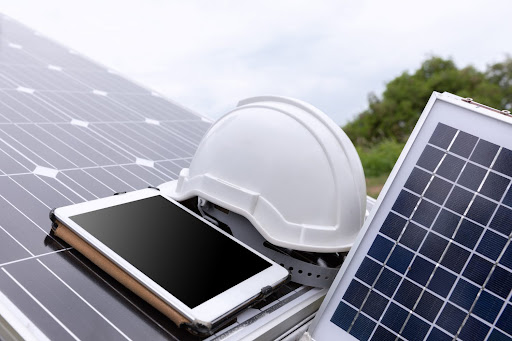
In a world increasingly aware of the importance of sustainability, more and more individuals like Scott Biski are finding innovative ways to merge eco-conscious living with modern conveniences. One such innovation that is gaining popularity among DIY enthusiasts is the creation of solar-powered outdoor entertainment systems. These systems not only provide a fantastic way to enjoy media outdoors but also align with sustainable practices by utilizing renewable energy sources. Here’s a detailed guide on how you can craft your own system, reducing your carbon footprint while not compromising on your outdoor fun.
Why Go Solar?
The advantages of using solar energy for an outdoor entertainment system are manifold. Firstly, solar energy is free once you have the initial setup, which can be a great way to reduce ongoing electricity costs. Secondly, it’s clean, relying on a renewable source that doesn’t produce carbon emissions. This makes solar-powered systems ideal for those looking to make a positive environmental impact. Lastly, solar power provides the ability to set up entertainment systems in locations without access to a conventional power grid, offering unparalleled flexibility in outdoor living spaces.
Planning Your Solar-Powered System
Assessing Your Needs
The first step in building a solar-powered outdoor entertainment system is to determine what components you want to include. Typical systems might feature:
- Audio: High-quality speakers for music and other audio playback.
- Video: A screen or projector for watching movies and videos.
- Lighting: Ambient lighting to enhance the viewing experience.
- Connectivity: Devices like streaming sticks or Bluetooth receivers to facilitate content delivery.
Each component will have specific power requirements, which will dictate the scale of your solar power setup.
Calculating Power Requirements
Once you’ve listed your desired components, calculate the total power consumption. This information is crucial for choosing the right size and number of solar panels, as well as the capacity of the battery storage needed to power your system, especially during the night or on cloudy days.
Components of a Solar-Powered Entertainment System
Solar Panels
Solar panels are the heart of your system. The size and number of panels you need depend on your total power consumption. Polycrystalline or monocrystalline panels are most common for residential use, with monocrystalline panels being more efficient but also more expensive.
Batteries
Batteries store the solar power collected during the day for use at any time. Deep cycle batteries are best suited for this application due to their ability to be repeatedly discharged and recharged. The capacity needed will depend on your energy calculation earlier in the planning stage.
Charge Controller
A charge controller regulates the voltage and current coming from the solar panels to the batteries, preventing overcharging and damage. It’s an essential component for maintaining the longevity and safety of your battery storage.
Inverter
If any part of your entertainment system runs on AC power, an inverter will be necessary to convert the DC power stored in the batteries to AC power. Ensure the inverter’s wattage capacity exceeds your system’s maximum consumption to avoid overload.
Connectivity and Control Devices
To streamline the operation of your system, include connectivity devices such as Wi-Fi or Bluetooth receivers. These allow you to control your media playback wirelessly, adding convenience and modern functionality to your setup.
Building and Installation Tips
Location Matters
Choose a location that receives ample sunlight throughout the day for the solar panels. Avoid areas shaded by trees or buildings to maximize your solar intake.
Secure Mounting
Ensure that all components, especially solar panels, are securely mounted to withstand weather conditions like wind and rain. Using durable, weather-resistant materials for the frame and housing of your components will protect them from environmental elements.
Wiring and Safety
Proper wiring is crucial for the efficiency and safety of your system. Use waterproof and UV-resistant cables and connectors to prevent damage. Additionally, all outdoor electrical installations should be grounded properly to avoid electrical hazards.
Testing and Maintenance
After installation, test the system thoroughly to ensure everything works seamlessly together. Regular maintenance checks of the solar panels and battery levels will help in keeping the system running efficiently.
The Benefits Beyond Entertainment
Crafting a solar-powered outdoor entertainment system is more than just a fun DIY project. It’s a step towards sustainable living, reducing your household’s dependence on grid electricity and decreasing your environmental footprint. Systems like these not only serve to entertain but also educate others about the feasibility and benefits of solar energy.
Incorporating such innovations into everyday life, as Scott Biski has done, shows how sustainable practices can be seamlessly integrated with modern technology, providing both functional and environmental benefits. By undertaking this project, you not only gain a fantastic venue for relaxation and entertainment but also contribute positively to the planet’s health—a win-win situation for all.
Information contained on this page is provided by an independent third-party content provider. Binary News Network and this Site make no warranties or representations in connection therewith. If you are affiliated with this page and would like it removed please contact [email protected]



Comments